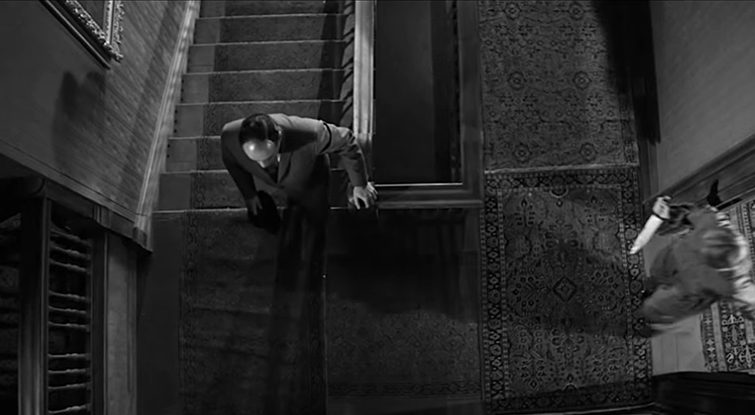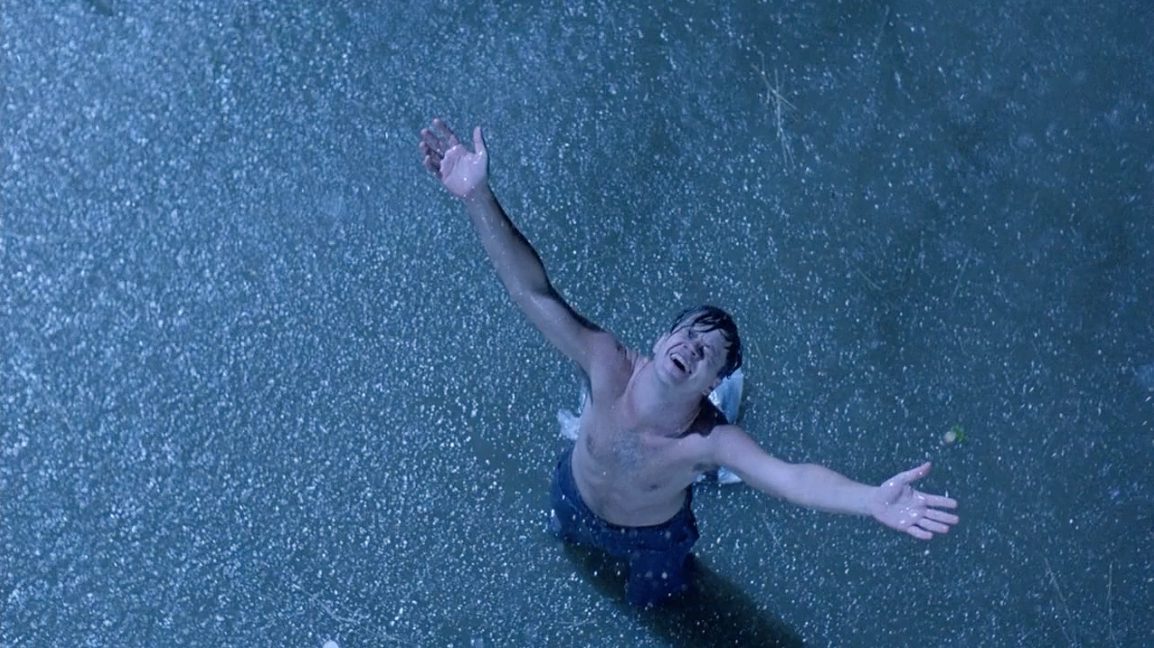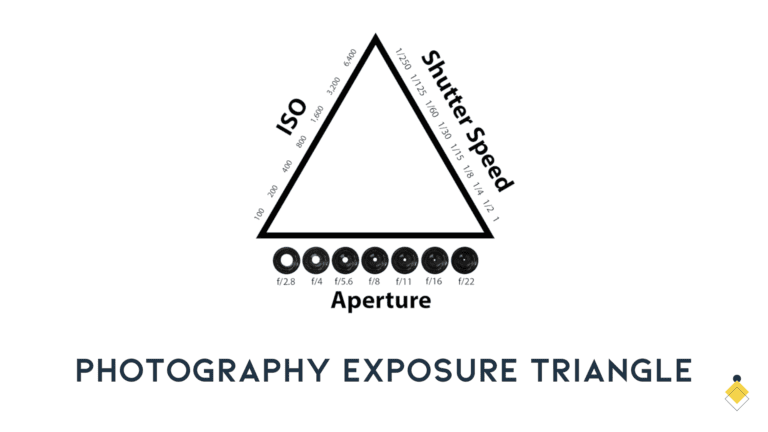Are you struggling to take dynamic, intriguing high angle shots in your film or photography project?
High angle shots provide a unique perspective that can dramatically influence the story and visual impact of your work.
This article will help you master this technique with useful tips and examples from iconic films. Let’s elevate your cinematography skills to new heights!
Defining a High Angle Shot
A high angle shot elevates the camera above the subject or scene, capturing it from a top-down perspective. In this type of shot, the camera lens is directed downwards by placing it somewhere higher than the eye level of characters or objects featured in the frame.

This cinematography technique creates a powerful effect which communicates dynamics beyond ordinary sight levels.
This specific camera placement lets one capture broad contexts and details that other shots might miss. For example, using high angle shots can reveal sprawling battle sequences or exaggerated scale of large spaces like newspaper operations as done in “Citizen Kane”.
Furthermore, they are often used to establish scope; an expansive crowd at a concert or bustling city streets become more visible when viewed from overhead. Thus, a high angle shot goes beyond merely presenting scenes—it adds depth and intricacy to those moments unfolding on screen through its unique viewpoint.
Purpose of High Angle Shots
High angle shots serve various purposes, including conveying weakness or powerlessness, creating emotional impact, and developing characters.
Conveying Weakness or Powerlessness
High angle shots are a powerful tool in visual storytelling, often used to emphasize the power dynamics between characters. By positioning the camera above a subject, filmmakers can create an image of vulnerability and powerlessness.

This technique adds depth to the narrative by subtly altering viewer’s perception of character strength or status.
The application of high angle shots doesn’t stop at highlighting inferiority alone but extends to expressing visceral emotional reactions as well. For instance, these cinematic angles can simulate the fear of falling from heights, thereby generating dread within viewers instantly.
While these feelings may be indirect and subtle, they profoundly influence how audiences perceive the unfolding action on-screen.
Creating Emotional Impact
High angle shots lay the groundwork for powerful emotional storytelling in film. Directors use these types of camera angles to tap into primal emotions, such as fear or Dread. The acute sense of falling created by a high angle shot can make viewers feel tense, scared even.
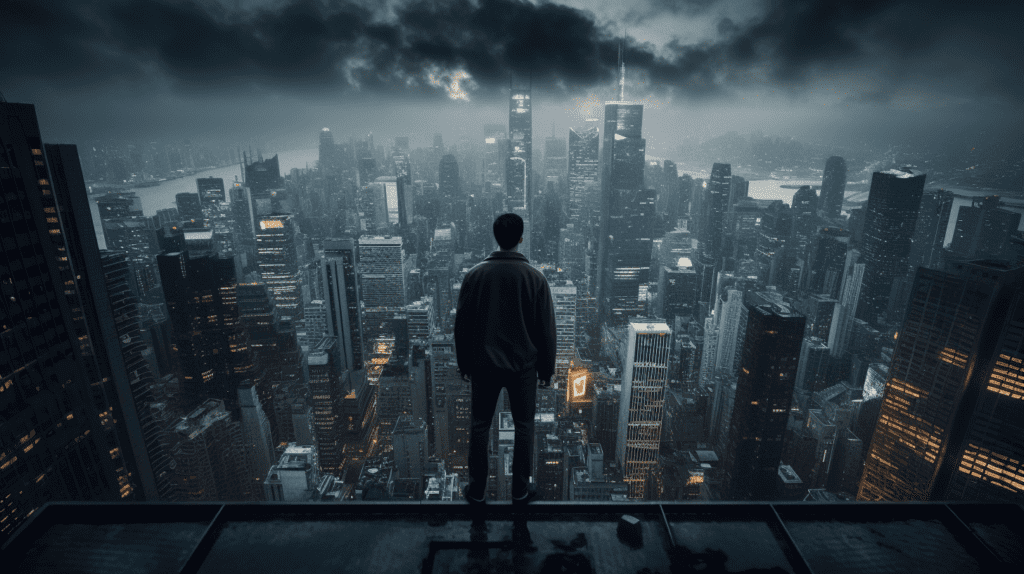
In addition to generating feelings of unease and powerlessness in a viewer, high angle shots also have profound effects on character perception. They diminish the stature and significance of characters on screen, making them appear vulnerable or weak.
This change can trigger an empathetic response from the audience, further enhancing their engagement with the narrative. The cinematic language isn’t solely visual; it is visceral.
A well-executed high-angle shot doesn’t just show – it makes you feel.
Character Development
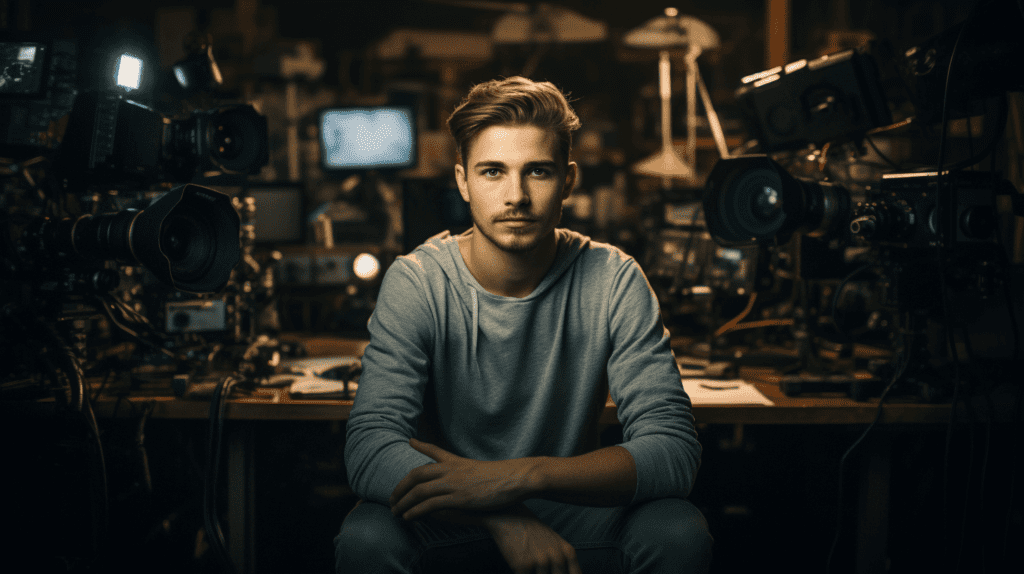
High angle shots play a significant role in shaping the evolution and perception of characters in film. This camera technique manipulates visual understanding to highlight power dynamics, often diminishing a character’s authority or stressing on their vulnerability.
For instance, an overhead shot may illustrate a protagonist’s momentary weakness, establishing room for growth and transformation throughout the narrative.
Moreover, moments of triumph are amplified using high angle shots where the odds seem stacked against the key character. The use of high-angle perspective depicts external circumstances dwarfing our hero, making their eventual victory appear even more significant to viewers.
This method furthers audience connection by enabling them to emotionally invest in the journey and evolution of on-screen personalities.
Iconic Examples of High Angle Shots
High angle shots have been used in numerous iconic films to convey power dynamics, vulnerability, and create visual impact. Some notable examples include:
- “Citizen Kane” (1941): The film uses high angle shots to showcase the vastness of Charles Foster Kane’s newspaper empire, highlighting his power and influence.

- “Mad Max: Fury Road” (2015): High angle shots are employed to emphasize the dominance of Immortan Joe over the wasteland, showcasing his control and oppression of the people.

- “Psycho” (1960): In this classic thriller directed by Alfred Hitchcock, high angle shots are used during the infamous shower scene to intensify the vulnerability and helplessness of Marion Crane.

- “The Shawshank Redemption” (1994): High angle shots are utilized throughout the film to capture the vastness and oppressive nature of Shawshank State Penitentiary, emphasizing the prisoners’ lack of control.

Techniques for High Angle Shots
Incorporate Shot Listing, Framing and Composition, and Consideration of Final Effect to master high angle shots.
Shot Listing
A shot listing is a crucial technique used in filmmaking to plan and organize the shots needed for a scene or sequence. It involves creating a detailed list of all the shots required, including specific camera angles, movements, and any special requirements for each shot.
Shot listings help ensure that all necessary shots are captured and provide guidance for the cinematographer and director during shooting. They also assist in budgeting and scheduling, as they outline the equipment and crew needed for each shot.
Tools such as storyboards, shot lists, or shooting scripts can be used to create shot listings. With a clear vision of desired shots, filmmakers can align the final product with their creative goals.
Framing and Composition
The framing and composition of a high angle shot play a crucial role in its effectiveness. The placement and arrangement of elements within the frame can enhance the narrative impact and emotional resonance of the shot.
When framing a high angle shot, filmmakers carefully consider how to position the subject in relation to other objects or characters in the scene. This deliberate choice can convey power dynamics, vulnerability, or even create visual metaphors.
Composition techniques such as leading lines, symmetry, and rule of thirds are also important considerations for creating visually appealing shots that draw audiences into the story.
Consideration of Final Effect
High angle shots require careful consideration of the final effect to ensure that the intended message is effectively conveyed. Factors such as camera placement, framing, and lighting play a crucial role in achieving the desired impact.
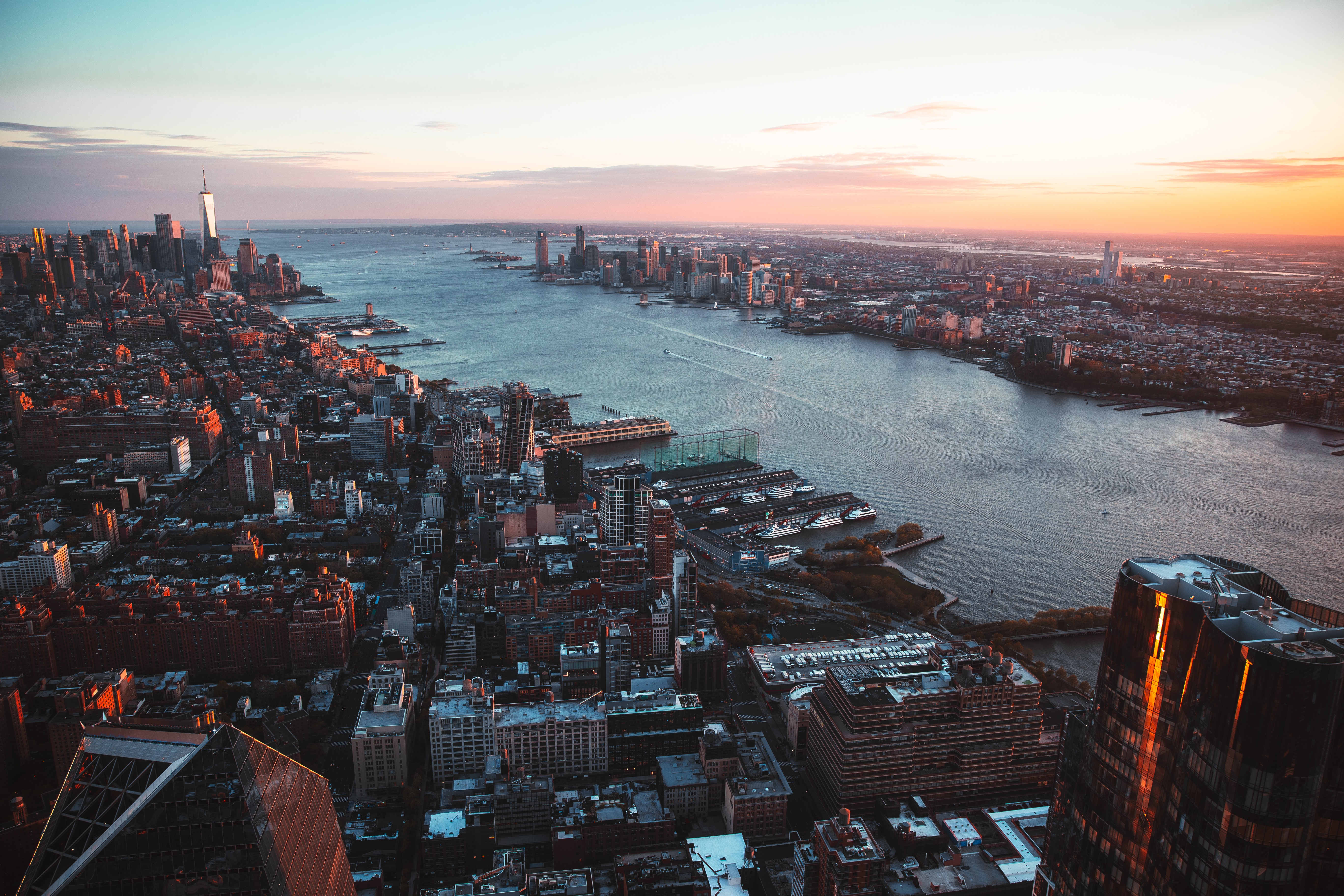
By strategically positioning the camera above the subject, filmmakers can emphasize vulnerability or powerlessness, heighten emotional reactions, or provide unique perspectives. Additionally, incorporating other elements such as sound design and editing techniques further enhance the final effect of high angle shots.
Taking all these factors into account when planning and executing high angle shots will result in powerful visuals that captivate audiences and contribute to the overall storytelling experience.
Tips for High Angle Shots
- Find a vantage point that allows you to position the camera high above the subject.
- Experiment with different angles to achieve the desired effect and composition.
- Consider using a crane, jib, or drone for more dynamic high angle shots.
- Use lighting cues to enhance the mood and convey the intended emotion in the scene.
- Think about the depth of field and how it can contribute to visual storytelling.
- Don’t be afraid to break the rules and try unconventional high angle shots that add creativity to your film.
Conclusion
Mastering the art of high angle shots requires a deep understanding of cinematography techniques and storytelling. By utilizing shot listings, framing and composition, and considering final effects, filmmakers can effectively convey vulnerability or powerlessness, create emotional impact, and develop their characters.
With iconic examples like “Citizen Kane” and “Mad Max: Fury Road,” it’s clear that high angle shots are a powerful tool in visual storytelling. So go ahead, experiment with this technique to enhance your filmmaking skills and leave a lasting impression on your audience.
FAQs: High Angle Shot
A high angle shot definition encompasses a technique where the camera is positioned above the subject, looking down. This perspective can convey a variety of emotional responses, from making the subject appear vulnerable, insignificant, or powerless, to creating a nuanced emotional landscape in the scene.
There are numerous high angle shot examples across cinema history. Alfred Hitchcock’s films, such as “Vertigo” and “Psycho,” famously use high angle shots to evoke feelings of vertigo or to highlight a character’s isolation. Another example is Orson Welles’s use of the high angle in “Citizen Kane” to illustrate Charles Foster Kane’s powerlessness in certain moments of his life.
Hitchcock uses a high angle shot to brilliantly manipulate the audience’s feelings. For instance, in “Vertigo,” high angle shots are used to induce a visceral sense of vertigo and instability. Hitchcock’s precise use of camera angles serves to amplify suspense, vulnerability, and the subjective emotional state of the characters, making the audience feel a direct connection to the psychological tension on screen.
Filmmakers often use high angle shots to show a character when they wish to convey a particular emotional or narrative point. A character shown from a high angle can appear vulnerable, isolated, or insignificant within their environment, thus influencing the audience’s perception of the character’s situation. This camera angle can also signify a shift in power dynamics, where the character seems powerless or dominated.
A visceral high angle can evoke a profound emotional response by making the audience feel a sense of discomfort, unease, or vertigo. This powerful tool can also make viewers feel a disconnect or superiority over the subject, creating a palpable tension or highlighting the emotional and physical vulnerability of the characters.
High angle shots and low angle shots offer starkly different effects and meanings. While a high angle shot can be used to make subjects appear vulnerable, insignificant, or powerless, a low angle shot does the opposite by imparting a sense of power, dominance, or heroism to the subject. The choice between these angles can dramatically alter the audience’s perception and emotional response to the character or scene.
When creating a shot list that includes high angle shots, filmmakers should consider the emotional impact and narrative role of the shot. It’s crucial to think about how the angle will affect the audience’s perception of the scene or character and whether it aligns with the overall storytelling goals. Additionally, logistical aspects such as the necessary equipment to achieve the shot, the suitability of the location, and how the high angle shots will integrate with the rest of the film’s visual style are essential factors.
High angle shots are versatile and can be effective in almost any genre, but they hold particular potency in horror and thriller films. Using a high-angle shot in horror can create a sense of vulnerability and impending doom, making it ideal for building suspense and fear. Dramatic films also utilize high angle shots to underscore moments of emotional turmoil or powerlessness.



